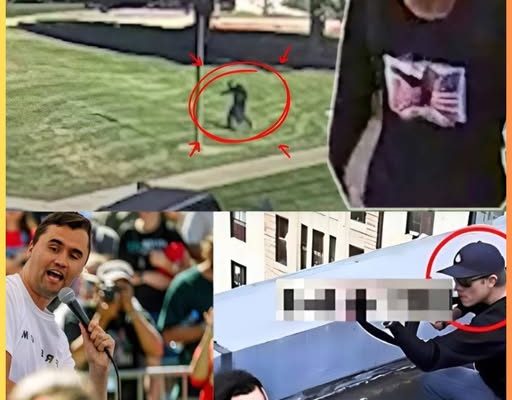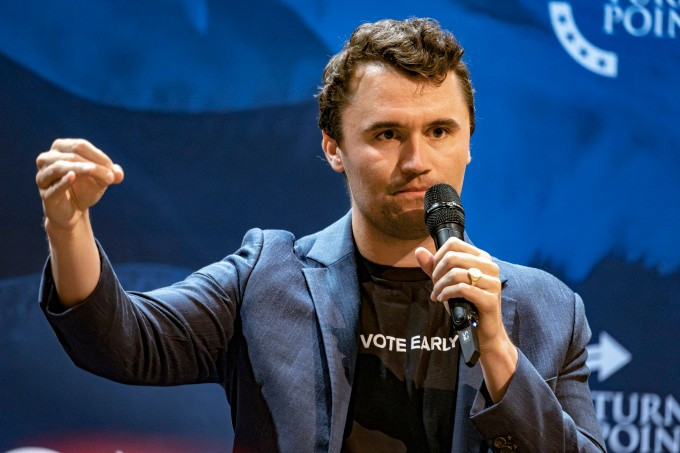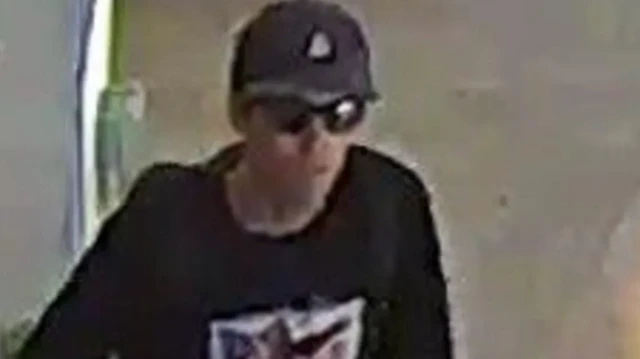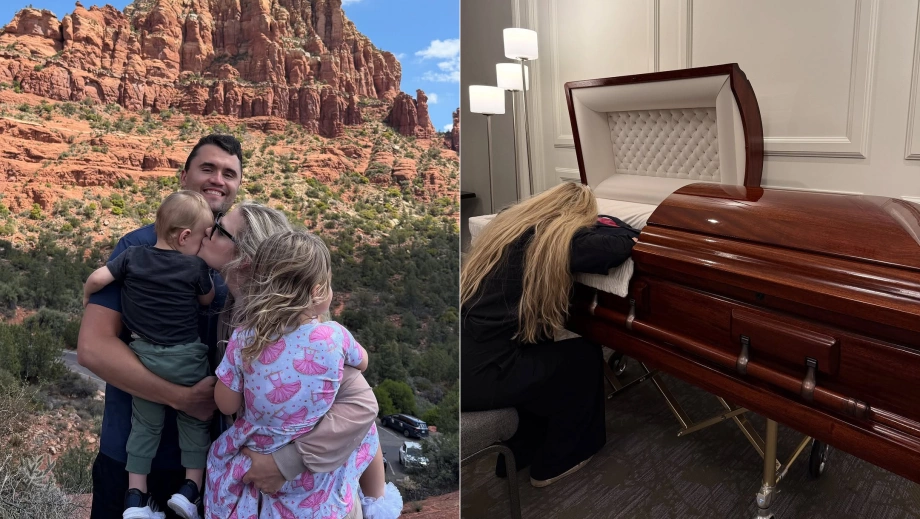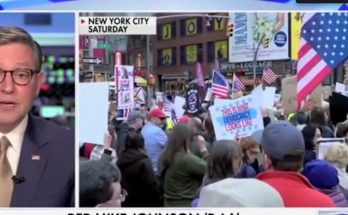The Shadow Behind Charlie Kirk
For weeks, the internet had been ablaze with speculation, wild theories, and headlines that alternated between fear and fascination. Everyone had watched the infamous clip of Charlie Kirk, the conservative commentator whose speech had drawn tens of thousands both in person and online. In just 39 seconds of footage, something happened—or more precisely, someone appeared—that changed everything.
It all began with the original video. Charlie Kirk was speaking to a packed hall, his words echoing off the walls, his tone both commanding and familiar. The audience hung on every sentence, but none of them noticed the figure behind him.
Not at first. In frame 38 of the high-definition footage, a dark figure, almost imperceptible, flashes behind him. It’s the kind of thing you might assume is a camera glitch or a trick of light, the sort of anomaly easily dismissed in a crowd of hundreds. Yet, for those who knew where to look, the figure was unmistakable: a man, standing quietly, almost blending into the shadows, observing, unobserved.
The news cycle went into overdrive. Analysts speculated. Social media users dissected every pixel. Headlines screamed: “Shadow Figure Behind Charlie Kirk—What Does It Mean?” and “Mystery Man Appears, Investigators Scramble.”
But the story that was presented to the public was incomplete, even misleading. Investigators had initially released statements, confidently declaring that nothing unusual had occurred, attributing any anomalies to poor lighting or camera artifacts. Yet now, with new footage released, the narrative had changed, and the credibility of official reports came into question.
The Footage That Changed Everything
The 39-second clip was painstakingly slow-motioned by analysts who had access to the raw files—uncompressed, untouched by news agencies. At 0:38, the shadow manifests. It’s a subtle movement at first, a shift in the air, a dark silhouette stepping into view for a fraction of a second.
But when replayed frame by frame, the figure becomes undeniably human. A man, standing there in the background, facing the stage, his presence invisible to the live audience, invisible to security cameras from most angles, yet entirely real.
Forensic video analysts were the first to notice inconsistencies. The lighting, the reflections, and the angles were all working against the figure being seen during the live event. “It’s a perfect storm of concealment,” one analyst explained. “
The angle of the overhead lights, the positioning of the crowd, and the depth of the stage created a visual blind spot. No one could have noticed him unless they were literally looking for it.”
But the implications were far more disturbing. If someone could stand behind Charlie Kirk, unseen by security, unregistered in the main camera feed, what were they doing there? And why had the original investigators dismissed it so quickly?
Investigators Admit Their Mistake
After hours of reviewing the footage, a senior investigator broke the silence. His voice, tight and hesitant, came over the press feed. “We were wrong,” he admitted. “Everything we initially reported about the incident is incorrect. There was a person present in that location, and we failed to identify him at the time.”
This statement sent shockwaves. Not only was the shadow real, but the failure of the investigative team called into question their methodology and the original narrative provided to the public.
News outlets quietly retracted initial statements, updating their stories with the new evidence, though few headlines captured the magnitude of the mistake. In the age of fleeting attention spans, a retraction never carried the same weight as the original sensational claim.
Analysts and amateur sleuths alike began dissecting every frame. The man in the shadow was elusive, his features blurred by darkness, yet his posture and movement suggested intent. He wasn’t a random attendee or a latecomer slipping into the hall; this was someone who had positioned himself deliberately.
His hands remained at his sides, his head slightly tilted as if studying something—or someone. The timing of his appearance coincided with the moment Kirk made a dramatic gesture, amplifying the intrigue. The shadow moved in perfect synchronization with the speech, almost like a silent observer or a guardian unnoticed.
Speculation and Theories
Naturally, speculation ran rampant. Conspiracy theorists posited that the man was a government agent, placed there for reasons unknown. Others argued it could be a rival political operative or even a member of Kirk’s own security team, inadequately documented.
Social media threads exploded with interpretations: some suggesting the figure had supernatural implications, a “guardian shadow,” or a “prophetic witness,” while others insisted the answer would be far more mundane—lighting, timing, and coincidence. But as more frames were analyzed, the reality seemed increasingly concrete: this was a real person, not an optical illusion.
Experts in psychology and human behavior weighed in. One analyst noted, “We are wired to notice patterns and assign meaning, but in this case, the patterns are literal. The man’s presence in that exact location, unnoticed for the duration of the live event, is statistically improbable. It suggests planning.”
Meanwhile, journalists delved into the background of the event. Security footage from other angles, interviews with attendees, and floor plans of the hall were gathered.
What emerged was a subtle but undeniable discrepancy: a blind spot existed directly behind Kirk, just outside the range of most cameras and stage lights. Security personnel had been instructed to focus on crowd behavior, not on the stage’s rear perimeter. It was a minor oversight—yet one that allowed the shadow to remain undetected.
Revisiting Frame 38
Returning to frame 38 became a ritual for many. Every twitch, every blink, every shadow shift was scrutinized. Video enhancement software revealed more details: a dark jacket, neatly tailored; shoes partially hidden by stage carpeting; a wristwatch catching a glint of light just before the figure vanished from view. Each detail humanized the shadow, turning abstract fear into concrete questions: who was he, and what was his purpose?
The timing of the figure’s appearance was also critical. At 0:38, Charlie Kirk had paused mid-sentence, an audience member had clapped, and a faint echo of conversation rippled through the hall.
The shadow mirrored subtle body movements, suggesting observation rather than intervention. In other words, the figure did not disrupt the event; he merely existed within it, unseen, unnoticed, yet perfectly positioned.
Public Reaction and Media Frenzy
The release of the corrected footage triggered a media frenzy. Headlines no longer focused on Kirk’s words or audience reaction—they centered on the enigma: “Who is the Shadow Behind Charlie Kirk?”
Podcasts devoted entire episodes to frame-by-frame analysis. Social media influencers posted theories ranging from espionage to deep-cover political intrigue. Even mainstream outlets, historically cautious about speculation, admitted the footage was compelling and inexplicable by ordinary means.
The public response was equally varied. Some were terrified, imagining hidden observers lurking at every event. Others were fascinated, seeing the footage as a real-life mystery worthy of Sherlockian investigation. One comment, widely shared, read:
“It’s like we are witnessing the intersection of our reality and a hidden layer of surveillance we never knew existed.”
Interestingly, Charlie Kirk himself did not comment publicly on the shadow. His team, when pressed, offered only a neutral statement: “We are aware of the new footage. We are reviewing it and have no additional comment at this time.” Whether this silence was strategic or genuine remains unknown, fueling further speculation.
Analytical Breakthroughs
Amid the speculation, professional analysts pursued hard data. Light refraction models, crowd behavior simulations, and AI-assisted motion tracking were employed. The results suggested a confluence of factors that allowed the shadow to remain invisible: the angle of stage lighting created pockets of darkness, the crowd’s density obscured peripheral vision, and Kirk’s own movements unintentionally drew attention away from the rear of the stage. Yet, despite these technical explanations, the identity of the figure remained a mystery.
Investigators also revisited security protocols. Surprisingly, the man in the shadow had not triggered any motion sensors or alarms. Footage from adjacent cameras confirmed a brief, discrete presence, suggesting someone adept at navigating such environments. Even law enforcement admitted that, from a procedural standpoint, this was an anomaly—a presence that should have been detected but wasn’t.
Theories Gain Momentum
With no official identification, theories proliferated. Some analysts suggested that the shadow was a political operative conducting covert surveillance. Others speculated about corporate espionage: perhaps Kirk’s words were considered valuable intelligence. Less rational theories posited that the shadow was symbolic, an archetype of the hidden observers who exist in modern life, unseen but influential.
One line of reasoning gained traction: the figure’s presence was not hostile. There was no threatening movement, no aggressive gestures, and no interaction with the audience. Instead, the shadow appeared to be observing, documenting, and disappearing before anyone could respond. This interpretation cast the figure less as a villain and more as a witness to the event—a ghost in the machinery of public spectacle.
Lessons from the Shadow
Beyond the mystery, the shadow highlighted systemic failures. Investigators admitted errors, media outlets had initially misreported, and the public had been left to fill gaps with speculation.
The incident underscored the importance of transparency, meticulous documentation, and cautious reporting. In a world dominated by high-speed media cycles, even minor oversights could produce waves of misinformation, fear, and fascination.
Moreover, the shadow symbolized the limits of perception. Even in crowded rooms with cameras and security, unseen elements could exist, unnoticed yet significant. Human attention, as the incident revealed, is selective. Lighting, angles, and social focus could obscure reality in subtle but profound ways.
“Where is Dad?” — The heartbreaking question made Erika choke, she could only hug her little daughter tightly, millions of people around the world also burst into tears! ph

